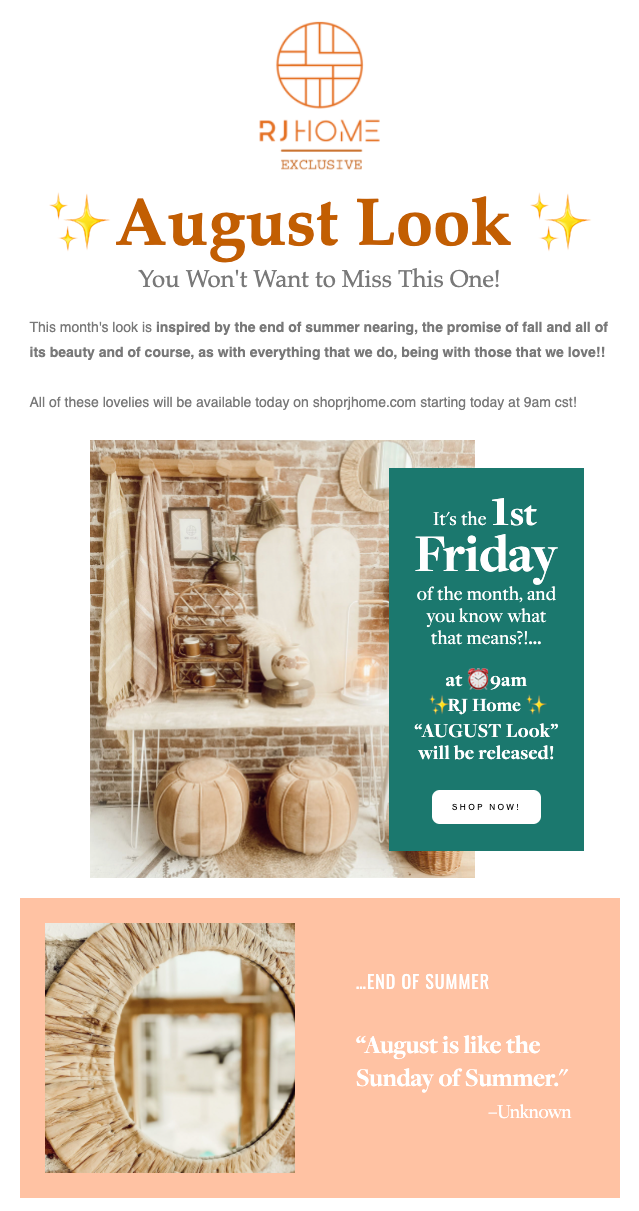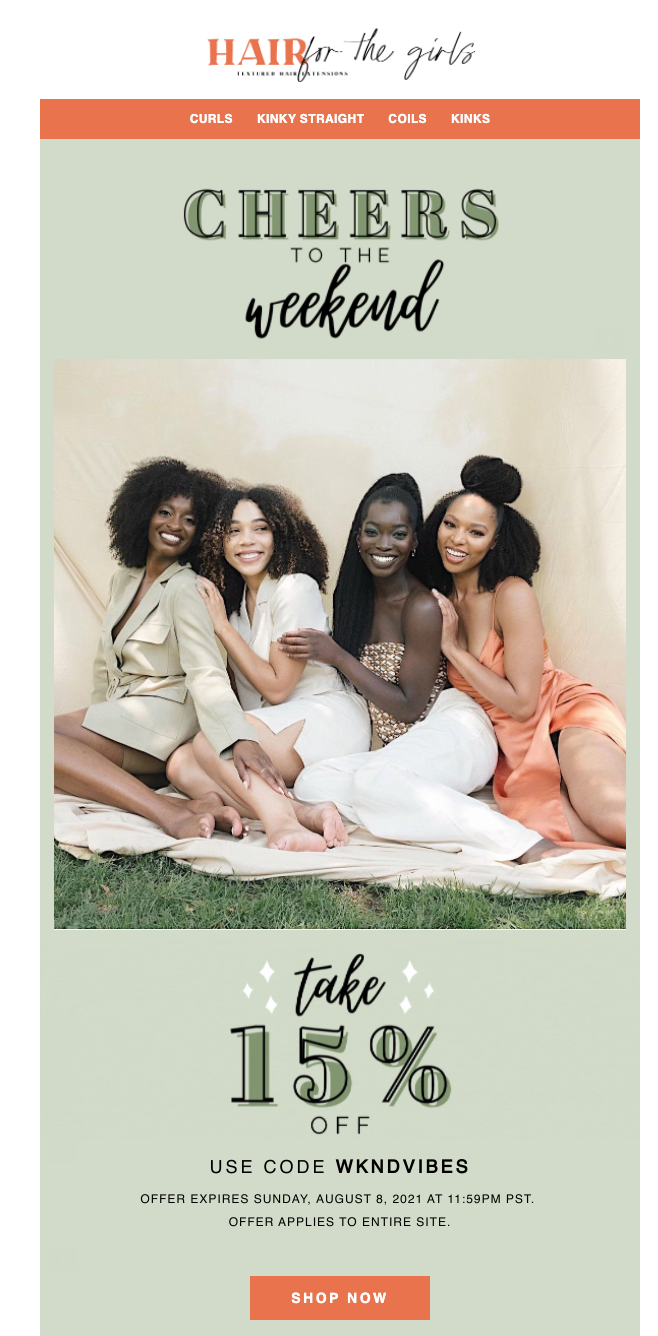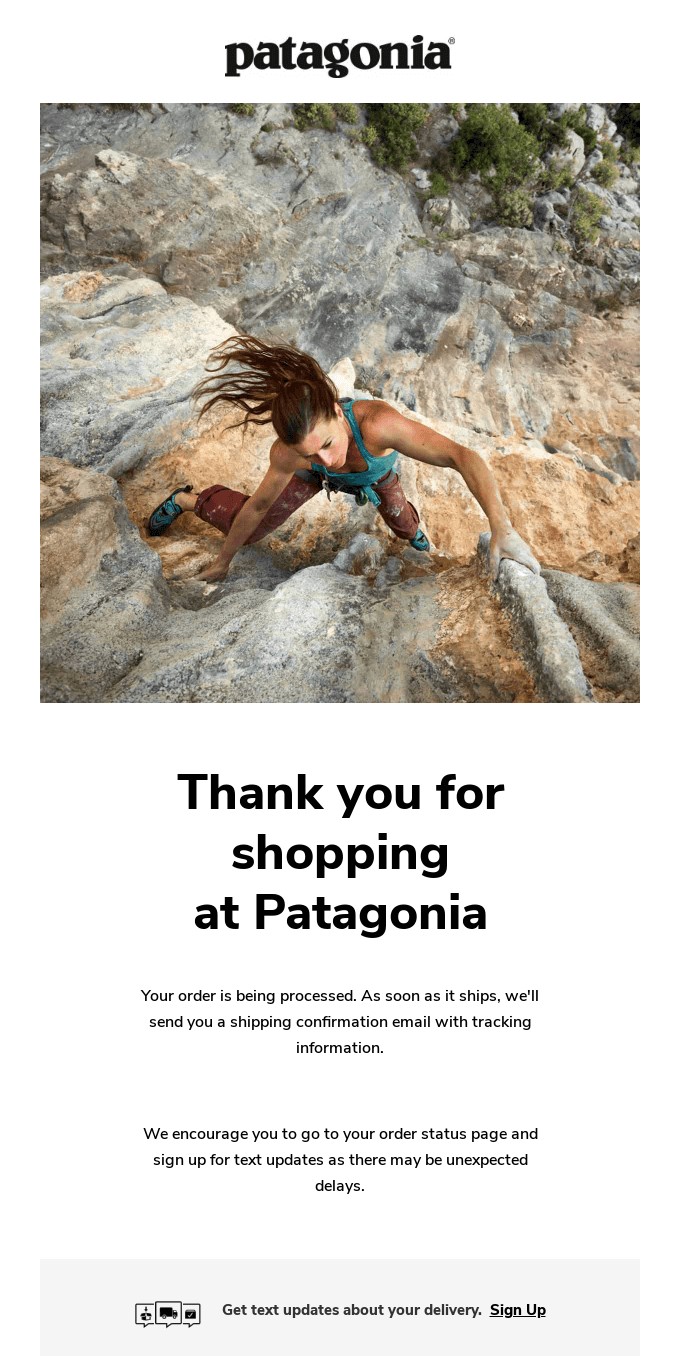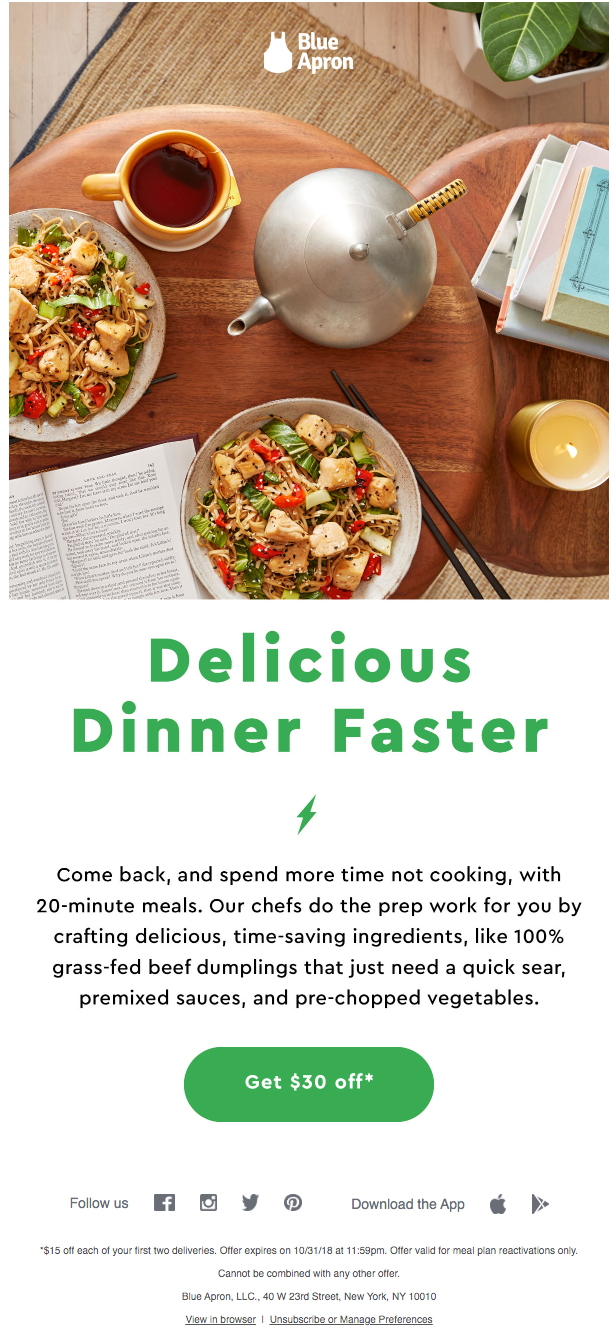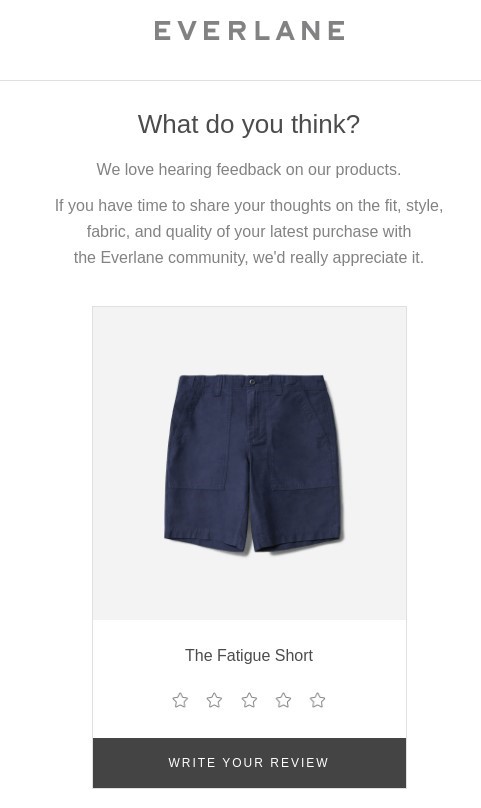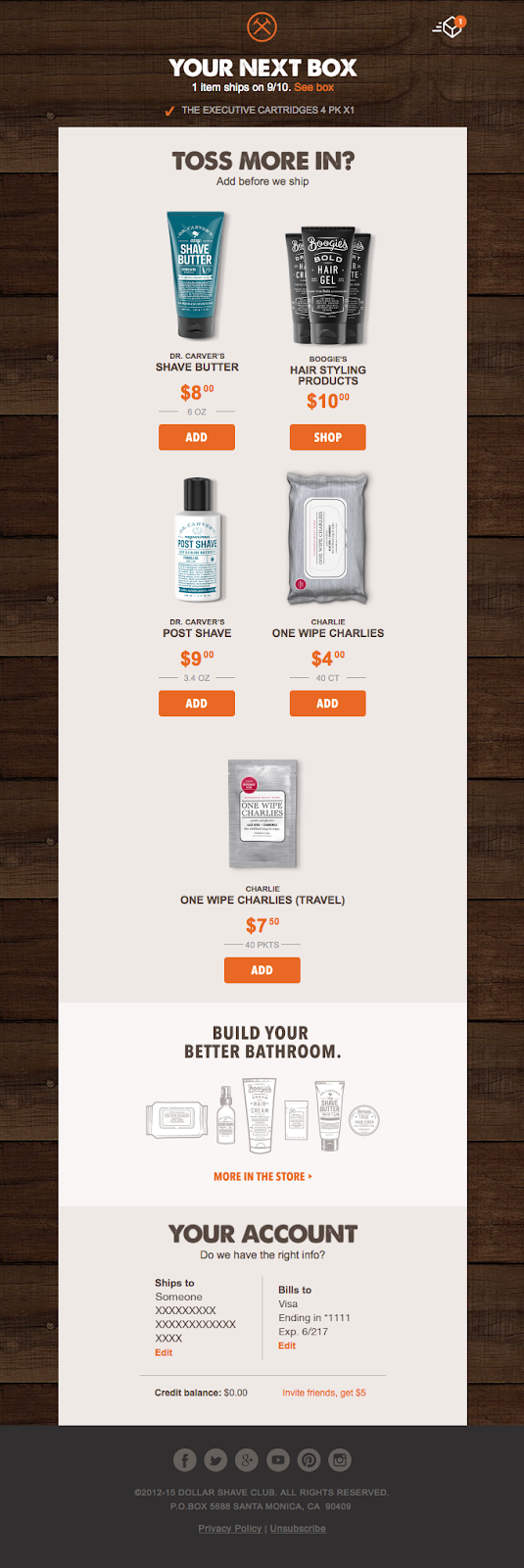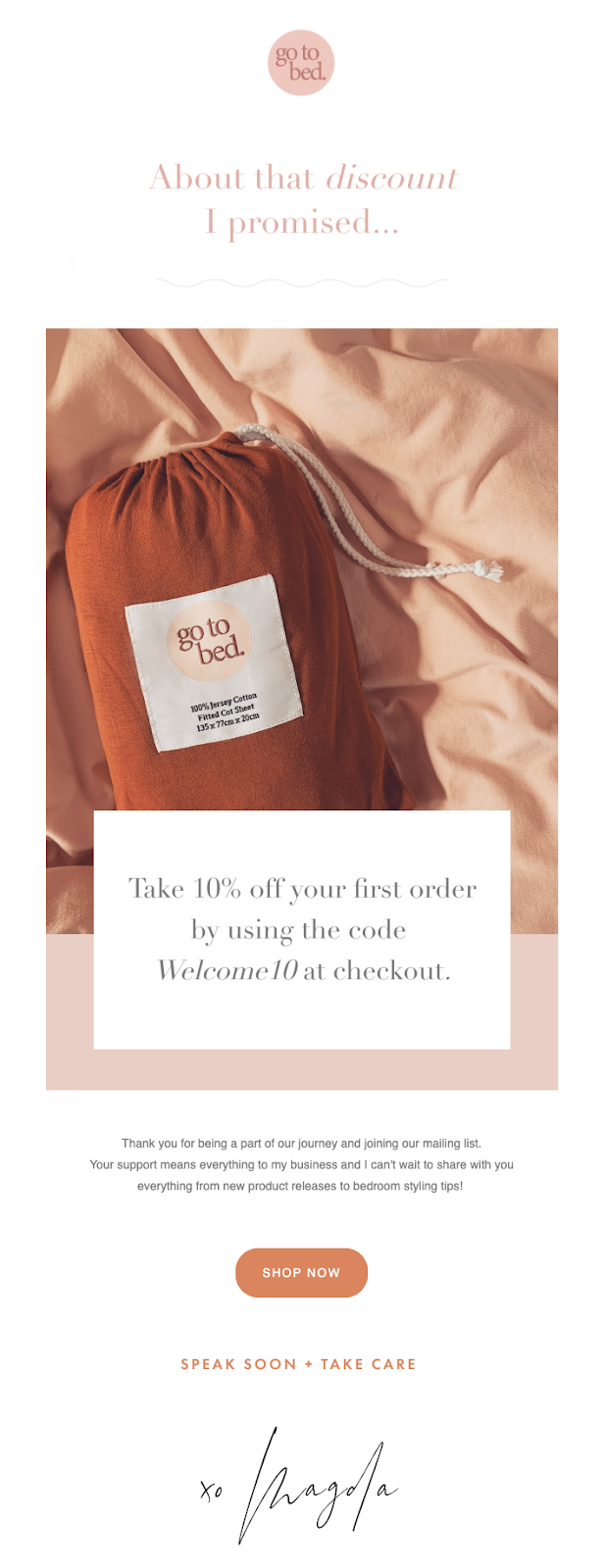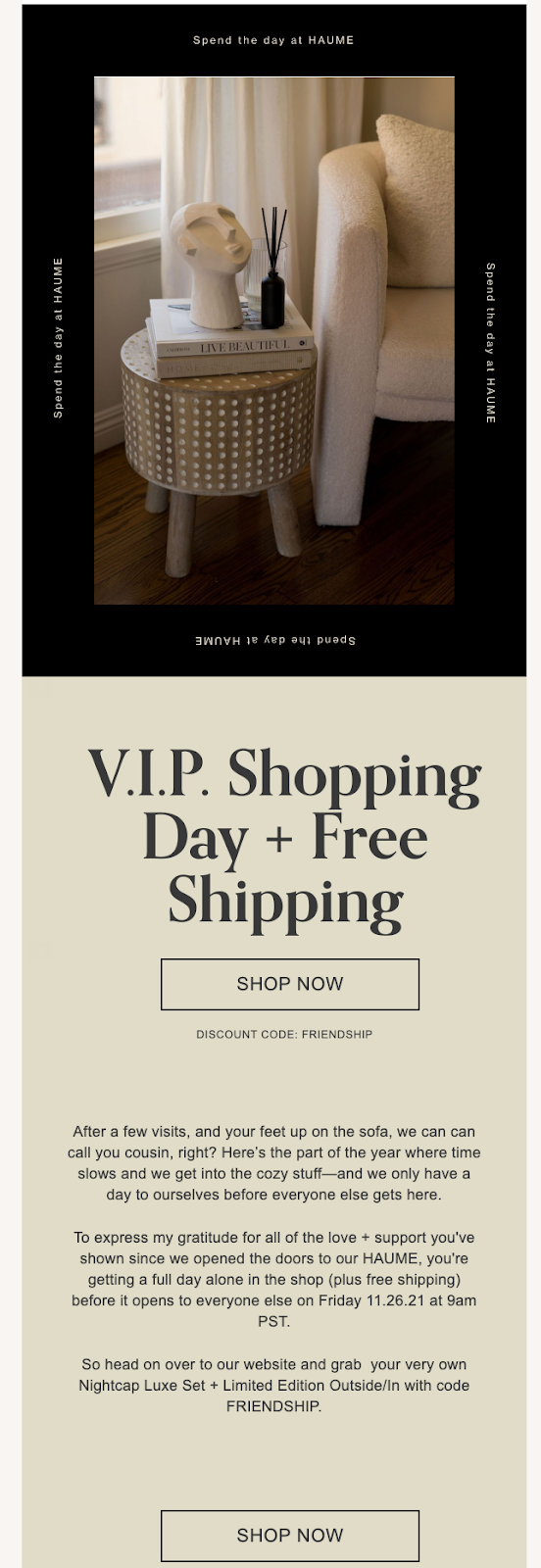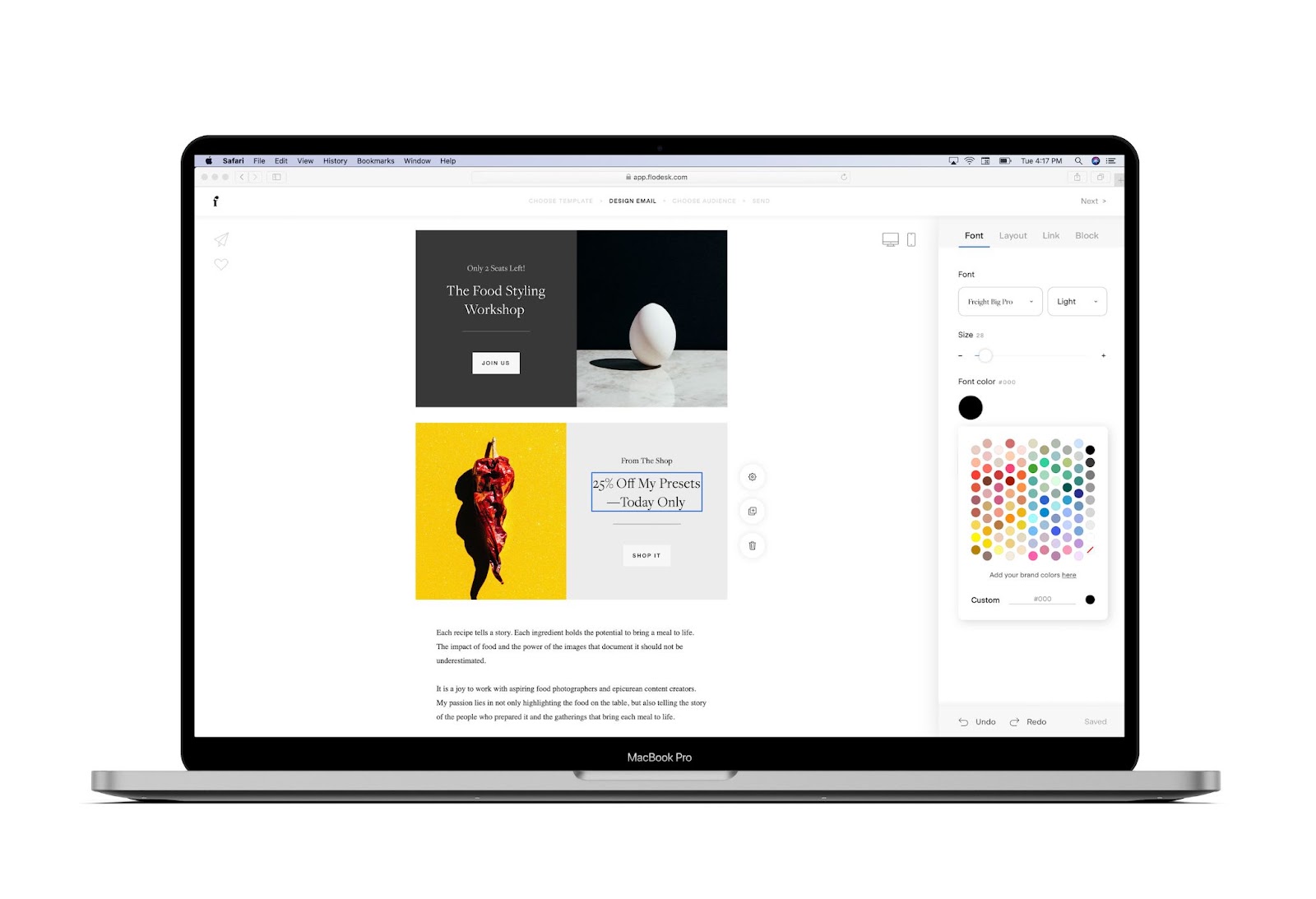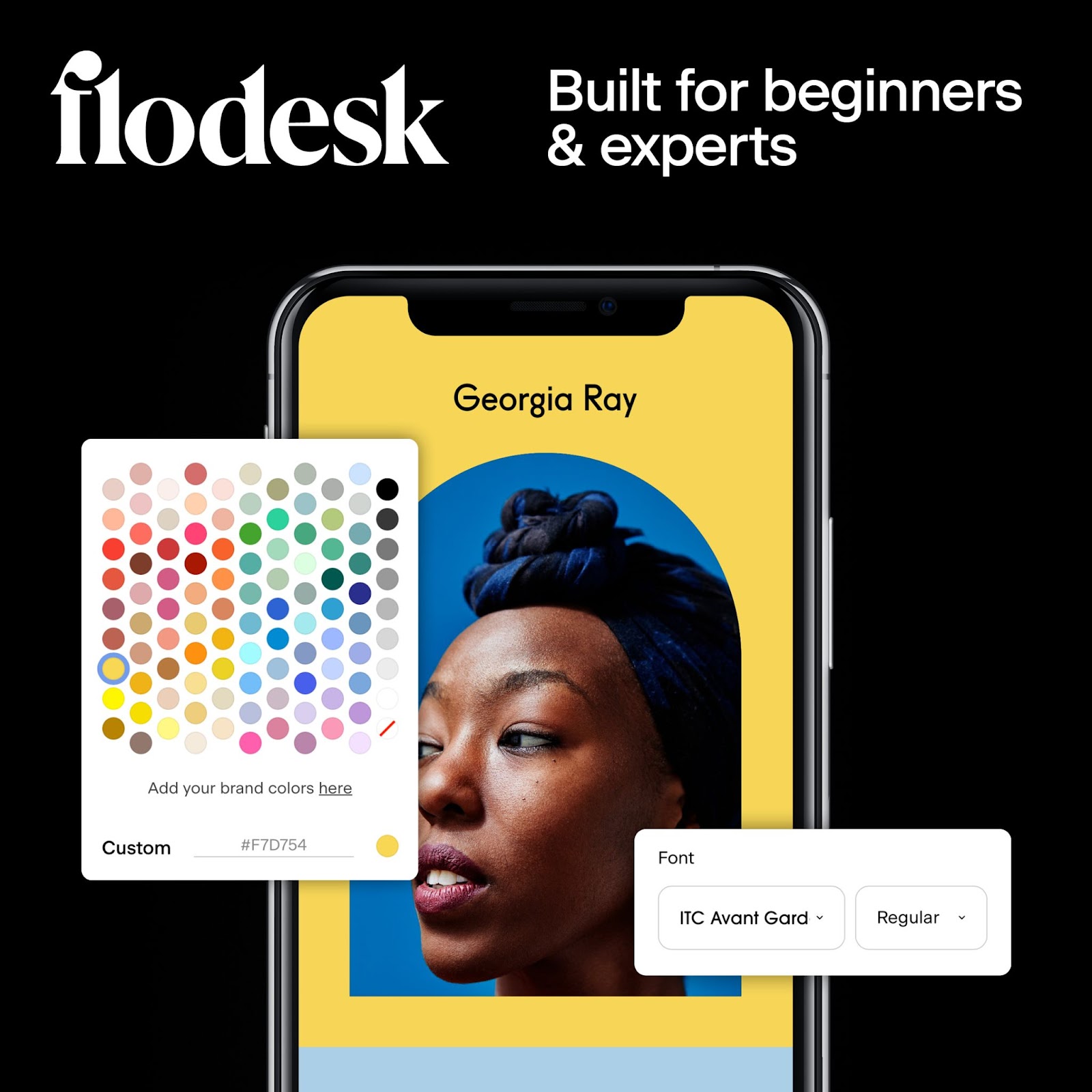The Conclusive Guide to Ecommerce Email Marketing (+ 9 Tips to Succeed)
Table of Contents Jump to:
Jump to:
Table of contents
Imagine a customer visits your online store, subscribes to your newsletter and takes advantage of the exclusive welcome discount that follows.
You continue to send helpful info and offers to your newly acquired customer, keeping them engaged and helping your business stay top of mind. Over time, this customer not only buys more from you, but they also leave positive reviews and refer more people to your business.
Email marketing makes all this possible. A typical email marketing campaign generates $42 for every dollar spent–a whopping 4200% ROI. That’s why it’s so important to bring your A-game to your ecommerce email marketing strategy.
In this guide, we’ll show you how to get started with ecommerce email marketing and share some of the best practices and tips you can adopt to ensure success.
But first, let’s be clear about why you need email marketing for your ecommerce business.
Get unlimited email sends & subscribers with Flodesk
We’ll never increase pricing because your email list is growing
Why do you need ecommerce email marketing?
In addition to the impressive ROI, ecommerce email marketing can benefit you in other ways:
- It boosts sales and conversion. Email marketing also allows you to segment your audience, so you can make highly personalized and tailored offers. That’s important because 80% of consumers are more likely to buy from a business that offers personalized experiences.
- It helps you recover lost revenue. For example, abandoned carts are one of the biggest sources of revenue loss for ecommerce businesses—–the average cart abandonment rate is 69%. With email marketing, you can recover some of those lost sales by following up on those customers.
- It helps your business stay top of mind. Sending regular ecommerce newsletters and marketing emails to your customers helps you stay in touch and reminds them of all the great products or services you offer.
Types of ecommerce emails
Below are the most important types of ecommerce emails to create for your business.
The “promotional” ecommerce email
Promotional emails are the staple of ecommerce email marketing and one of the best ways to grow your email list. In fact, 42% of consumers subscribe to email lists just to receive discounts and savings—this means offering a discount is usually a great way to get prospective customers to sign up for your email list.
Here are some of the best examples of promotional emails you can send to your customers and why they work.
The announcement/product launch email
RJ Home creates buzz around its monthly product looks with this well-crafted product launch email. Here’s why this email works:
- It includes a discount code for customers.
- It uses a captivating subject line.
- It’s personalized for the customer.
The special/time-bound offer email
Hair for the Girls gives email subscribers an exclusive time-bound offer in this “special offer” email. Here’s why this email works:
- The offer is clear and persuasive.
- The email is well-laid out and emphasizes the right information.
- It includes a clear call to action.
The seasonal campaign email
In this seasonal email, Myrtle announces a new product collection to celebrate spring. The email offers subscribers a preview of the pieces before the official launch.
Here’s why this email works:
- It creates excitement around the product launch.
- It gives email subscribers a feeling of exclusivity.
The “transactional” ecommerce email
Transactional emails are automated emails that you send to customers in order to facilitate a sale. They are triggered by customer activity and usually contain vital information that the customer needs to complete a transaction.
According to Mailgun, transactional emails have high open rates of up to 80%. This is no surprise because your customers expect these emails, which are a crucial part of your customer retention workflow. In fact, 47% of customers report being annoyed if they wait more than a minute to receive a confirmation email. Plus, 93% of customers will consider a different brand if they have a poor transactional experience.
Some of the most important transactional emails to send include:
- Email address confirmation emails
- Password reset emails
- Order confirmation emails
- Purchase receipts
The above order confirmation email from Patagonia is a good example of a transactional email. Here’s why it works:
- It provides all the order information the customer needs.
- It sets clear expectations around what the customer should expect.
- It lays out the available support options.
The “welcome” ecommerce email
Who doesn’t love a warm welcome? 74% of subscribers expect to receive a welcome email immediately after they subscribe to your email list, so it’s no surprise that welcome emails generate 4x more opens and 5x more clicks compared to regular email marketing campaigns.
This welcome email example from Haume works because:
- It introduces the customer to the business and welcomes them into the community.
- It includes special discounts and offers that are tailored for the customer.
- It urges them to take action (i.e., start shopping).
The “abandoned cart” ecommerce email
No one likes cart abandonment, but as we shared above, the reality is that an average of 69% of customers don’t complete their purchase. An abandoned cart email is your opportunity to recover some of those sales.
This abandoned cart email example from Asics works because:
- It encourages the customer to complete the checkout process, including a direct link to the checkout page.
- It offers free shipping as an additional incentive.
- It lists the items in the customer’s cart—a gentle reminder in case they forgot.
The “re-engagement” ecommerce email
A re-engagement email is a great way to win back customers who have stopped opening or clicking your marketing emails. A survey by Return Path found that 45% of inactive subscribers who received a re-engagement email read the subsequent email as well.
The example above from Blue Apron works because:
- It reminds customers why they signed up in the first place.
- It offers them a discount to win them back.
- It includes a clear call to action.
The “informational” ecommerce email
You know your products inside out, but your customers don’t. So, if you have vital information about your product (or service) that your customers will find useful, share this in an informational email.
In the email example above, Everything Just Baked shares a list of four essential cookie flavors and why customers should get them.
Here’s why this email works:
- It’s targeted at subscribers who will find the information helpful.
- It explains the suggestions and includes product links for easy shopping.
- Cookie images are strategically placed–for a mouth-watering effect.
The “feedback/review request” email
Your business needs customer feedback to thrive. Not only are reviews essential for internally reviewing your business, but they are also the ticket to getting more people to buy from you—according to Trustpilot, nine out of ten customers read reviews before buying a product.
You can actively seek feedback from customers post purchase via a feedback request email, like the above example from Everlane.
Here’s why the email works:
- It’s personal and straight to the point.
- It explains the areas where they need feedback.
- It includes the rating box so customers can rate the product right from their email.
The “upsell/cross-sell” email
Upsell and cross-sells are important ecommerce marketing tactics that can help you generate more revenue. In an upsell, you encourage a customer to buy a comparable but higher-priced product; in a cross-sell, you offer related or complementary products, usually at a discount. Upsells can increase your revenue by an average of 10 – 30% while cross-selling can increase sales by 20% and profits by 30%.
In the example above, the Dollar Shave Club encourages the customer to add more items to their cart before their items are shipped.
Here’s why the email works:
- It’s personalized, with product recommendations that are tailored to the customer’s existing cart.
- It offers the customer an opportunity to save on shipping—a good reason to add more products.
- The email is well-laid out, with hard-to-miss buttons, links and CTAs.
Get unlimited email sends & subscribers with Flodesk
We’ll never increase pricing because your email list is growing
9 ecommerce email marketing tips & best practices
Looking for tips and best practices to help you develop a successful ecommerce email marketing strategy? We’ve compiled the best 9 to get you started.
1. Craft captivating subject lines
Want customers to read your emails? Craft a subject line that makes them click.
In fact, 33% of email recipients open emails solely because of the subject line while 69% will mark an email as spam if they don’t like the subject line. So, you have to get it right.
For best results, keep your subject lines short and to the point—studies show that subject lines with 6 to 10 words perform best. Include a clear offer and throw in an emoji or two, if appropriate.
Here’s why this best practice is effective:
- Great subject lines pique the reader’s curiosity.
- They stand out in your customer’s inbox.
- They tell customers what to expect.
Need more tips on how to write email subject lines? Read How to Write Click-Worthy Email Subject Lines.
2. Keep emails short and easy to skim
Attention is a scarce commodity online. A study by the Nielsen Norman Group found that the average time allocated to a newsletter after opening it is only 51 seconds. Plus, recipients fully read only 19% of each newsletter and just scanned the rest of the content.
These are good reasons to keep your emails short and to present your information in a way that’s easy to scan.
Here’s why this best practice is effective:
- It helps customers easily find the most important information.
- It helps you get the most out of the few seconds that readers allot to your email.
- It shows that you respect your customers’ time.
In the welcome email above, Go to Bed keeps things short and tidy. They use short paragraphs, bold titles, and a clean layout to make it easy for readers to quickly get the gist.
3. Make hard-to-resist offers
Who doesn’t love a great offer? In fact, a study by Coupons.com and Claremont Graduate University found that coupons make people happier and more relaxed. So, it’s worth spending the time to find an offer that hits the sweet spot with your customers.
Why this best practice is effective
- Done right, making a great offer can boost your overall sales revenue.
- It’s a win-win–customers feel like they are getting a deal and you make more sales.
- It encourages new customers to buy from you.
In the example above, An Indigo Day offers their customers a 50% discount on all sweaters and tops. For their highly engaged customers, that’s a great incentive to buy.
4. Segment your audience
No one likes a blast-all email. Your customers want to feel special and included, so you need to segment your email lists in order to provide more personalized content.
Segmentation allows you to categorize customers into specific groups based on shopping history, personal data, or email engagement activities so you can send them more personalized offers and content. And this is important—39% of marketers who segment their email lists report higher open rates while 24% record better deliverability and an increase in revenue.
For example, you could create a segment for your highest paying customers and send them exclusive deals. In the example above, Haume offers repeat customers a VIP experience.
Does segmenting your email list sound intimidating? The good news is that it doesn’t have to be. Flodesk offers email segmentation features that make it easy to track customer data and separate your contacts into groups.
Why this best practice is effective
- It allows you to make hyper-personalized offers.
- It makes your customers feel valued and understood.
- It helps you build a better relationship with your customers.
5. Use responsive email design
Responsive email design is no longer optional. 72% of email recipients will usually delete an email if it is not optimized for mobile.
And you don’t need to be an expert in email design to make responsive emails. With a tool like Flodesk, you get an intuitive email builder that allows you to design emails that look great on any device. You can also choose from hundreds of templates or build yours from scratch.
Here’s why this best practice is effective:
- Responsive emails are easier to read and scan
- When the content of your emails displays properly, readers can quickly find the information they need to take action.
- It ensures that more people will read your email.
6. Improve email deliverability
The emails you send are not guaranteed to make it to your customers—they may go straight to their spam folder instead. The best way to avoid this is to improve your email deliverability and maintain an excellent sender reputation.
Some of the steps you can take to improve email deliverability include:
- Authenticating your domain name—this means verifying that your emails actually come from you.
- Segmenting your audience and sending only relevant content.
- Growing your email list organically (never buy an email list.)
Here’s why improving email deliverability is an effective best practice:
- It ensures that your emails get to your subscribers’ inboxes.
- It helps you maintain a good sender reputation.
- It helps you build trust with your subscribers.
For more help with growing your email list, read How to Build an Email List: 11 Swift Steps to Find Subscribers.
7. Embrace email marketing automation
Automated emails have 70% higher open rates and 152% higher click-through rates than regular emails. That’s because they are triggered by subscriber activity and are sent just in time for them to take action.
With a tool like Flodesk, you can easily set up automations—called workflows—so emails are delivered exactly when they’re needed. For example, you can set up a welcome email sequence or email course. Flodesk’s Rosanna Clark explains what workflows are and how you can use them to grow your business in the Flodesk university course, What Are Workflows and When to Use Them in Your Email Marketing.
Why this best practice is effective:
- It allows you to deliver emails when your subscriber is most likely to engage with them.
- It helps you provide a personalized experience.
- It helps you generate revenue even when you’re offline.
8. Prune your list frequently
No matter how good your emails are, some of your subscribers will never open or engage with them. That’s a normal occurrence in the email marketing world. But it’s best to frequently remove subscribers who do not engage with your emails because they decrease your overall open rates and may ultimately hurt your email deliverability.
Before you delete inactive subscribers, however, it’s always a good idea to try to re-engage them first via a re-engagement campaign. If they still do not engage, then you can take them off your list.
Flodesk makes it easy to create a re-engagement email campaign. You can identify inactive subscribers, add them to a segment and send them a re-engagement email. Then you can monitor analytics to see those who re-engage and those who do not.
Here’s why this best practice is effective:
- It improves your email open rates because you only maintain the most engaged subscribers.
- It improves your sender reputation.
- It helps you save costs since most email marketing providers charge based on email size. (P.S. Flodesk doesn’t!)
For more info on how to create re-engagement emails, read We Miss You | Re-Engagement Email Examples to Win Back Customers.
9. Use analytics to improve your email marketing strategy
The best way to improve your email strategy is to study what works and what doesn’t. And you can achieve this by paying attention to your email analytics.
Some of the most important metrics to watch are:
- Open rates: how many subscribers opened your email.
- Click-through rate (CTR): how many subscribers clicked your links.
- Unsubscribes: how many people unsubscribed from your email.
Here’s why this best practice is effective:
- It allows you to identify what’s working and do more of it.
- It helps you make more informed decisions about your strategy.
- It allows you to calculate your email marketing ROI.
Get unlimited email sends & subscribers with Flodesk
We’ll never increase pricing because your email list is growing
Create a winning ecommerce email marketing strategy
When it comes to ecommerce, you need a good email marketing strategy.
By following the tips and best practices laid out above, you’re sure to keep your customers engaged and coming back for more. Flodesk makes it super easy to build your email list and engage your customers. With Flodesk’s intuitive email builder, you can create beautifully designed emails that look great on any device. Plus, Flodesk does not charge you based on the size of your list, so you can grow your email list without worries.
Ecommerce email marketing FAQs
1. How does ecommerce use email marketing?
In ecommerce, email marketing is used to promote the products of an ecommerce store to potential or existing customers via email. The emails sent can be either regular marketing or transactional emails. Marketing emails help you engage your subscribers by sending them offers and promotions while transactional emails facilitate ecommerce sales.
2. What are the 4 main types of marketing emails?
The four main types of marketing emails are promotional emails, transactional emails, re-engagement emails, and retention emails.
3. What are the advantages of email marketing for ecommerce?
Email marketing boosts ROI by helping customers discover new products, discounts, and offers. It also helps in recovering abandoned carts and re-engaging inactive customers.
